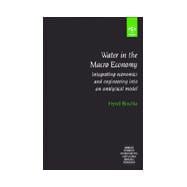
|
ix | ||||
|
xi | ||||
| Acknowledgements | xv | ||||
| Preface | xvii | ||||
|
xxi | ||||
|
1 | (6) | |||
|
7 | (20) | |||
|
7 | (8) | |||
|
7 | (1) | |||
|
8 | (1) | |||
|
9 | (1) | |||
|
10 | (1) | |||
|
11 | (1) | |||
|
11 | (4) | |||
|
15 | (6) | |||
|
15 | (4) | |||
|
19 | (2) | |||
|
21 | (1) | |||
|
22 | (5) | |||
|
27 | (38) | |||
|
28 | (7) | |||
|
28 | (1) | |||
|
28 | (7) | |||
|
35 | (9) | |||
|
36 | (1) | |||
|
37 | (3) | |||
|
40 | (1) | |||
|
41 | (1) | |||
|
42 | (2) | |||
|
44 | (8) | |||
|
45 | (2) | |||
|
47 | (1) | |||
|
48 | (4) | |||
|
52 | (8) | |||
|
52 | (2) | |||
|
54 | (2) | |||
|
56 | (4) | |||
|
60 | (4) | |||
|
60 | (3) | |||
|
63 | (1) | |||
|
64 | (1) | |||
|
65 | (84) | |||
|
66 | (1) | |||
|
67 | (1) | |||
|
68 | (8) | |||
|
68 | (2) | |||
|
70 | (4) | |||
|
74 | (1) | |||
|
75 | (1) | |||
|
76 | (7) | |||
|
77 | (1) | |||
|
77 | (5) | |||
|
82 | (1) | |||
|
83 | (40) | |||
|
83 | (4) | |||
|
87 | (1) | |||
|
88 | (8) | |||
|
96 | (9) | |||
|
105 | (9) | |||
|
114 | (9) | |||
|
123 | (16) | |||
|
128 | (1) | |||
|
128 | (1) | |||
|
129 | (7) | |||
|
136 | (1) | |||
|
137 | (2) | |||
|
139 | (7) | |||
|
139 | (1) | |||
|
139 | (1) | |||
|
140 | (1) | |||
|
141 | (3) | |||
|
144 | (2) | |||
|
146 | (1) | |||
|
146 | (3) | |||
|
149 | (30) | |||
|
149 | (1) | |||
|
150 | (1) | |||
|
151 | (3) | |||
|
154 | (8) | |||
|
155 | (3) | |||
|
158 | (1) | |||
|
159 | (2) | |||
|
161 | (1) | |||
|
162 | (3) | |||
|
162 | (2) | |||
|
164 | (1) | |||
|
165 | (11) | |||
|
167 | (1) | |||
|
168 | (4) | |||
|
172 | (1) | |||
|
173 | (3) | |||
|
176 | (1) | |||
|
176 | (3) | |||
|
179 | (8) | |||
|
179 | (1) | |||
|
180 | (2) | |||
|
182 | (2) | |||
|
182 | (1) | |||
|
183 | (1) | |||
|
184 | (1) | |||
|
184 | (3) | |||
|
184 | (1) | |||
|
185 | (1) | |||
|
186 | (1) | |||
| Appendix 1: Case Study of Morocco | 187 | (30) | |||
| Appendix 2: The MEIAH-1 Model: A Decision Support System | 217 | (20) | |||
| Appendix 3: Background on the Input-Output Table Used in MEIAH, and on Parallel Work by Others | 237 | (10) | |||
| Appendix 4: Dealing with Uncertainty in Policy Decisions | 247 | (14) | |||
| Bibliography | 261 |
The New copy of this book will include any supplemental materials advertised. Please check the title of the book to determine if it should include any access cards, study guides, lab manuals, CDs, etc.
The Used, Rental and eBook copies of this book are not guaranteed to include any supplemental materials. Typically, only the book itself is included. This is true even if the title states it includes any access cards, study guides, lab manuals, CDs, etc.